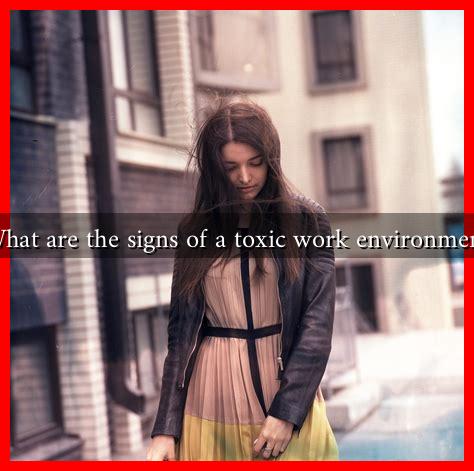-
Table of Contents
What are the Signs of a Toxic Work Environment?
In today’s fast-paced corporate world, the importance of a healthy work environment cannot be overstated. A toxic work environment can lead to decreased productivity, high employee turnover, and even mental health issues. Recognizing the signs of a toxic workplace is crucial for both employees and employers. This article will explore the key indicators of a toxic work environment, supported by research and real-world examples.
Understanding a Toxic Work Environment
A toxic work environment is characterized by negative behaviors, poor communication, and a lack of support among employees and management. According to a study by the Society for Human Resource Management (SHRM), nearly 60% of employees have experienced a toxic work environment at some point in their careers. This statistic highlights the prevalence of the issue and the need for awareness.
Key Signs of a Toxic Work Environment
Identifying a toxic work environment can be challenging, especially when employees are accustomed to negative behaviors. Here are some common signs to look out for:
- Poor Communication: Lack of transparency and ineffective communication can create confusion and mistrust among employees. If team members are not informed about important decisions or changes, it can lead to frustration and disengagement.
- High Turnover Rates: Frequent employee departures can indicate a toxic culture. According to a Gallup report, organizations with high employee engagement have 25% to 65% lower turnover rates than those with low engagement.
- Negative Attitudes: A pervasive sense of negativity, cynicism, or hostility among employees can be a red flag. If team members frequently complain or gossip, it can create a toxic atmosphere.
- Lack of Support: Employees should feel supported by their managers and colleagues. A lack of mentorship, guidance, or recognition can lead to feelings of isolation and resentment.
- Unrealistic Expectations: When employees are consistently overloaded with work and face unrealistic deadlines, it can lead to burnout. A toxic environment often prioritizes results over employee well-being.
- Favoritism and Inequality: If certain employees receive preferential treatment, it can create divisions within the team. This can lead to resentment and a lack of collaboration.
Real-World Examples
Several high-profile companies have faced scrutiny for fostering toxic work environments. For instance, in 2020, a report surfaced about the culture at Amazon, where employees described a high-pressure environment that prioritized productivity over well-being. Similarly, the #MeToo movement brought attention to toxic workplace cultures in various industries, highlighting the need for change.
On the other hand, companies like Google and Salesforce have made headlines for their positive work cultures, emphasizing employee well-being and open communication. These contrasting examples illustrate the impact of workplace culture on employee satisfaction and retention.
Addressing Toxicity in the Workplace
For employees, recognizing the signs of a toxic work environment is the first step toward addressing the issue. Here are some strategies to consider:
- Document Incidents: Keep a record of specific incidents that demonstrate toxic behavior. This documentation can be useful if you decide to report the issue.
- Communicate Openly: If you feel comfortable, discuss your concerns with your manager or HR. Open communication can sometimes lead to positive changes.
- Seek Support: Connect with colleagues who share your concerns. Building a support network can help you navigate the challenges of a toxic environment.
- Consider Your Options: If the situation does not improve, it may be worth exploring other job opportunities. Your mental health and well-being should be a priority.
Conclusion
Recognizing the signs of a toxic work environment is essential for fostering a healthy workplace. Poor communication, high turnover rates, negative attitudes, lack of support, unrealistic expectations, and favoritism are all indicators of toxicity. By addressing these issues proactively, both employees and employers can work towards creating a more positive and productive work culture. Remember, a healthy work environment not only benefits individuals but also contributes to the overall success of the organization.
For more insights on workplace culture and employee well-being, consider visiting SHRM or Gallup.


